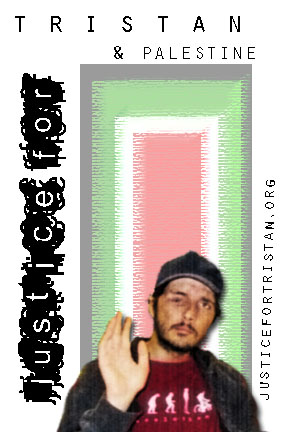Tag: Electronic Intifada
-
Tristan Anderson civil suit delayed as new evidence emerges
by Charlotte Silver 3 Demember 2011 | The Electronic Intifada “If he had been a Palestinian, he would have gone to the Ramallah hospital and died,” Gabby Silverman said firmly. Silverman was close enough to Tristan Anderson that she didn’t even have to shout for him to hear her when he was shot in the head…
-
Latest Israeli bombing plunges Gaza into darkness
10 December 2010 | The Electronic Intifada, Rami Almeghari Air strikes by Israeli warplanes at dawn on Thursday caused serious damage to the Gaza Strip’s only power plant, plunging the territory — which already suffers from frequent outages — into darkness. Media reports said the air strikes hit two sites belonging to Hamas near the…
-
Why Israel imprisoned my best friend
2 September 2010 | Mohammed Khatib, The Electronic Intifada When I was a boy I was still allowed to travel in Israel. I went to the beach and swam in the sea, something that most Palestinian children living in the West Bank today can only dream of. Israel has been restricting movement more and more…

